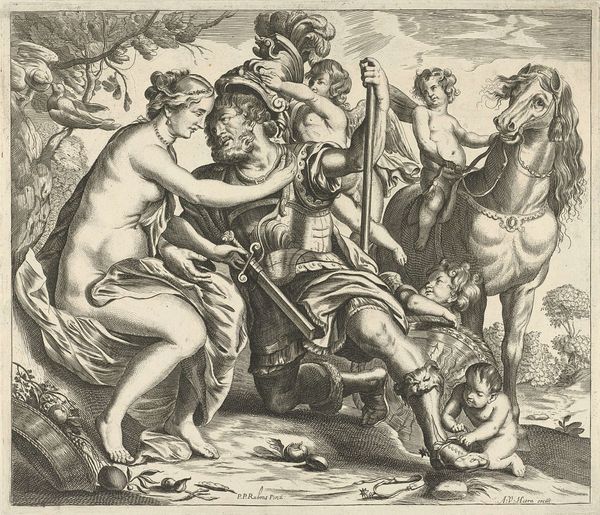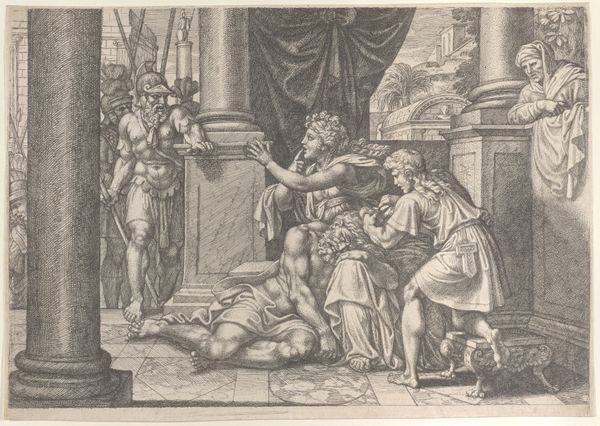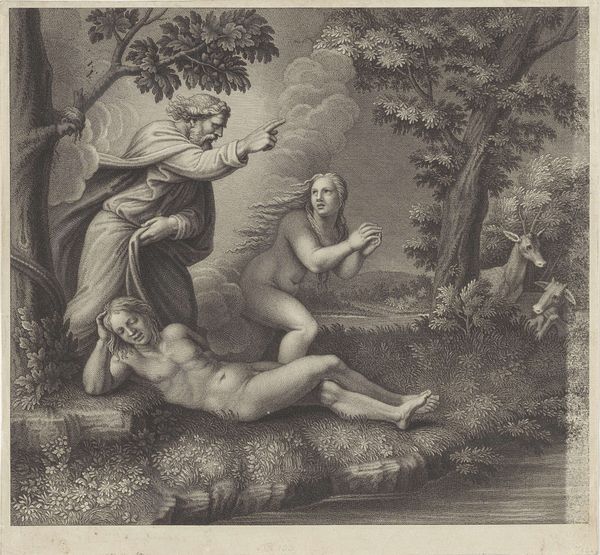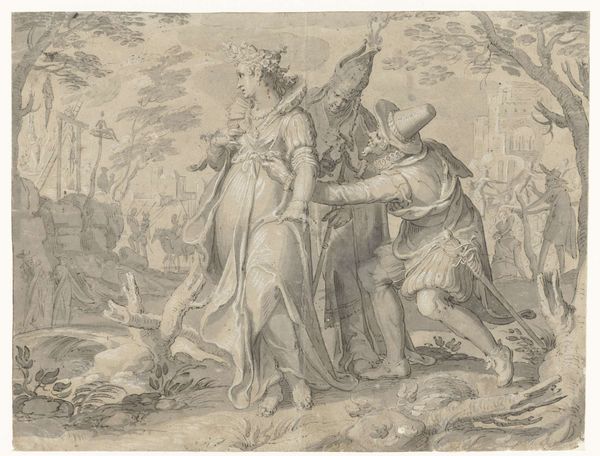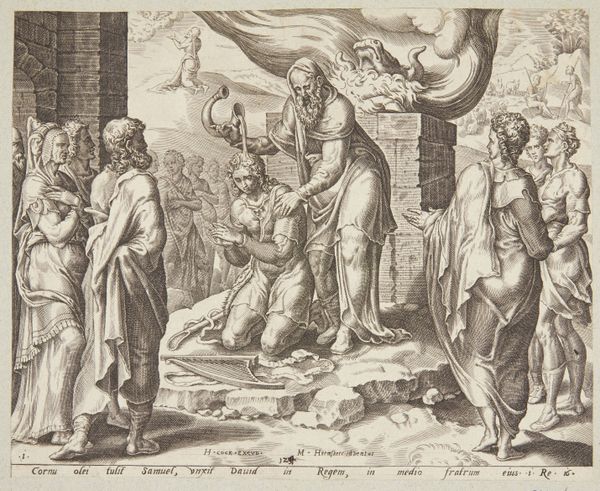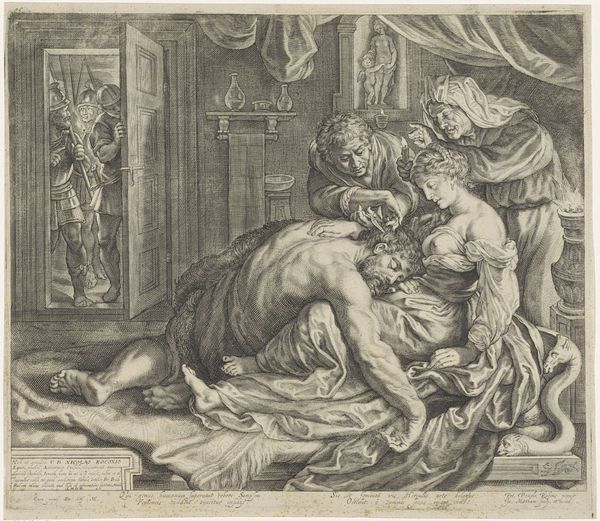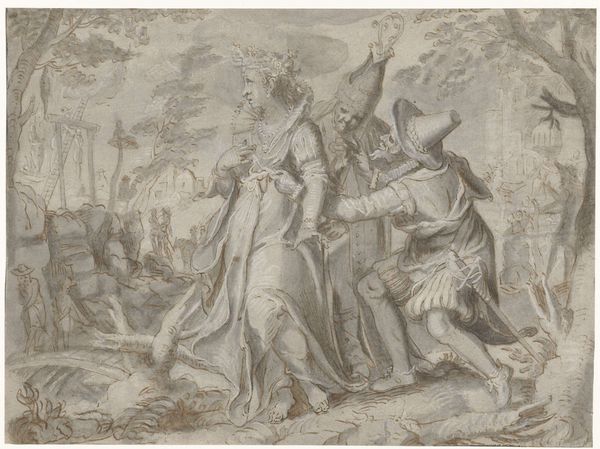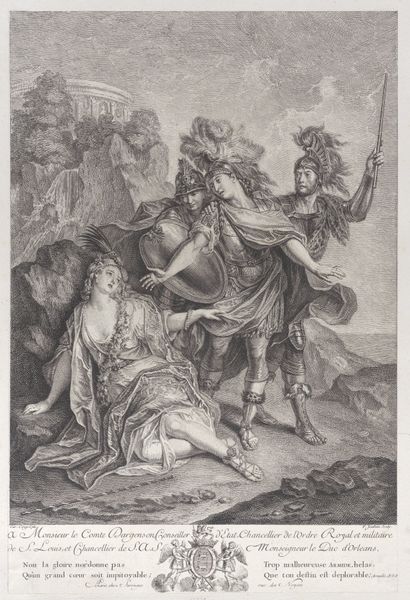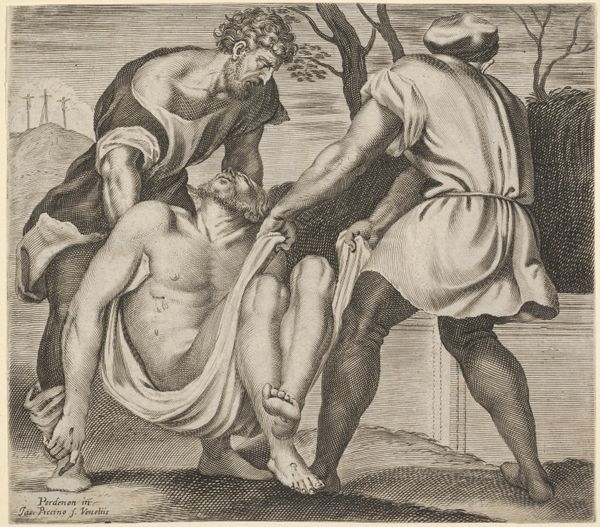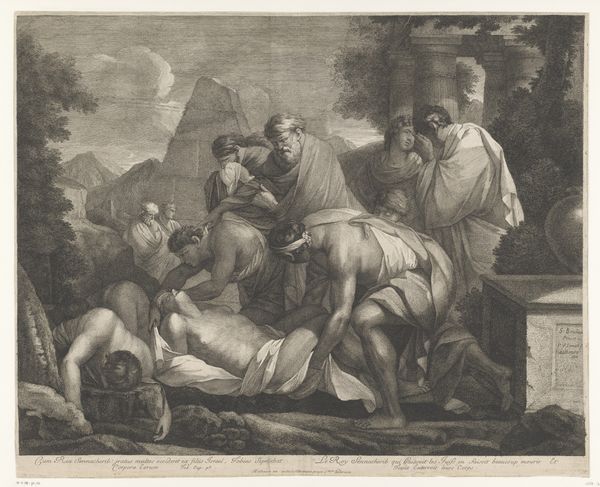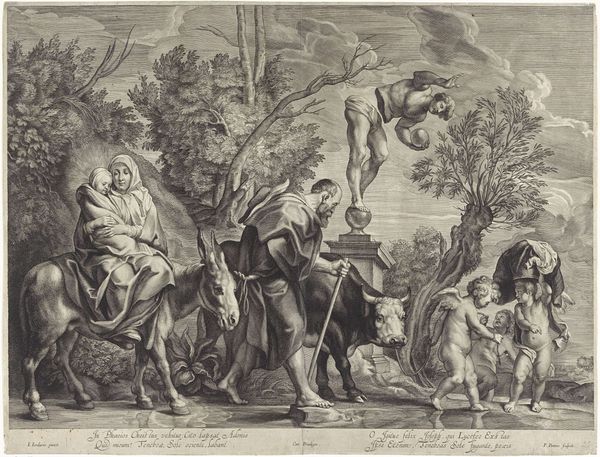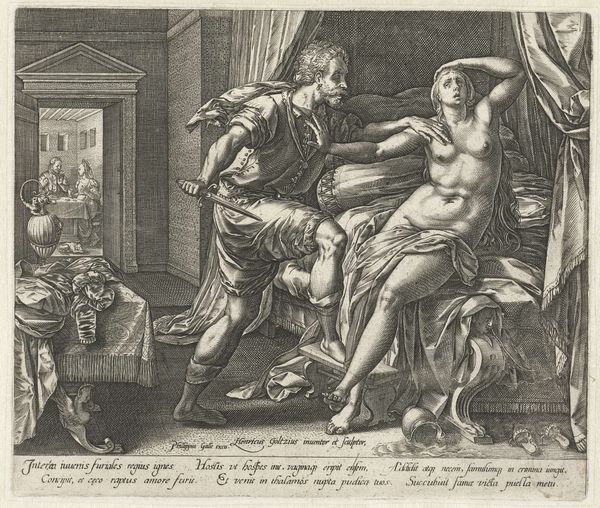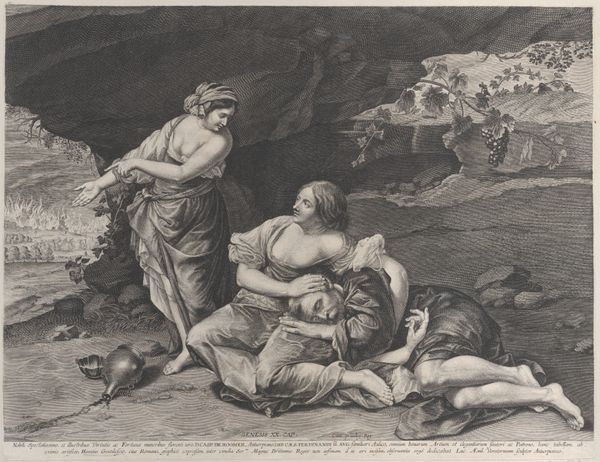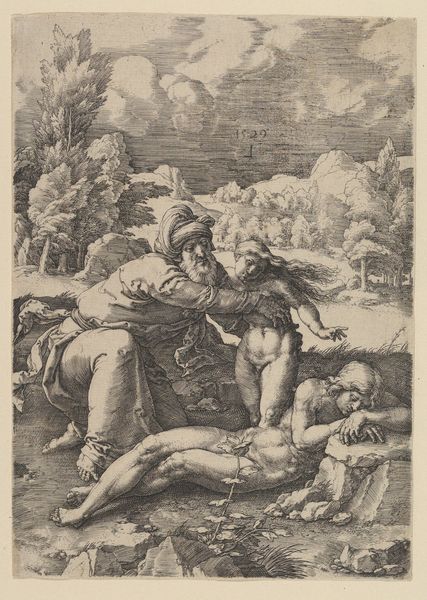
drawing, charcoal
#
portrait
#
drawing
#
charcoal drawing
#
mannerism
#
figuration
#
pencil drawing
#
portrait drawing
#
genre-painting
#
charcoal
#
charcoal
Copyright: Public Domain: Artvee
Editor: Here we have Joachim Wtewael's "Young Woman Assisted by a Gentleman," a charcoal drawing from around 1609 to 1611. The figures and landscape feel very carefully rendered, almost staged. What strikes you when you look at this drawing? Curator: I’m drawn to the materiality of charcoal in this Mannerist piece. Wtewael uses charcoal not just for sketching, but to create a highly finished product. Consider the social context: Charcoal, a readily available and inexpensive material, is elevated to create a work that mimics the appearance of a more costly engraving. What does it say about the artist’s access to resources or his intended audience? Editor: That’s fascinating. I hadn't considered the choice of charcoal as significant. It almost feels subversive to use a 'humble' material in such an elaborate style. Does that challenge the traditional boundaries between different art forms? Curator: Precisely! The means of production become central to our understanding. He's toying with ideas of high art versus craft, potentially reflecting on societal hierarchies and the commodification of art itself. Is Wtewael commenting on the labor involved in creating art and who gets to participate? Editor: So, by focusing on the material and how it's used, we can explore larger social and economic issues of the time? I'll definitely look at art with different eyes now! Curator: Absolutely. Materiality invites us to challenge conventional interpretations and look at art as a product of specific processes within a specific context.
Comments
No comments
Be the first to comment and join the conversation on the ultimate creative platform.
